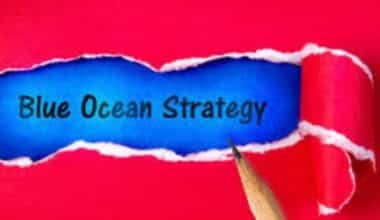Dynamic pricing is a pricing strategy where changeable prices are used instead of fixed ones. The fundamental tenet of the dynamic pricing system is to provide the same commodity to various customer segments at various costs. Let’s see how the dynamic pricing model works with examples in Airbnb.
What Is Dynamic Pricing?
Dynamic pricing, also known as surge pricing, demand pricing, or time-based pricing, is a pricing technique in which companies set variable prices for goods or services based on the market’s demands at a given time. Businesses can alter prices based on algorithms considering competitors’ pricing, supply and demand, and other external market conditions. Several sectors, including hospitality, tourism, entertainment, retail, electricity, and public transportation, often use dynamic pricing. Each industry adopts a somewhat different approach to dynamic pricing based on its unique requirements and the demand for the product.
In a primarily technologically based pricing system called “dynamic pricing,” prices are adjusted for various clients based on their willingness to pay.
What Factors Affect Dynamic Pricing?
Dynamic pricing adjusts your lease price based on several important aspects and data points. In contrast, you likely considered elements like the periods and your competition.
#1. Seasonality
A dynamic pricing solution will do this, exactly like you would change your price depending on the seasons. To make that pricing in the peak seasons as profitable as possible, it does so in concert with the other elements listed above.
#2. Time of the Week.
Your weekday charges will probably be higher if your location draws business travelers. On the other hand, your holidays will undoubtedly be the more expensive days if your rental draws more tourists.
#3. Input and Output
If there is little demand for properties in your sector or location, your pricing tool will reduce your price to draw in more visitors. Conversely, if prices increase, it will cause your prices to increase, allowing you to earn a little extra money.
#4. Local Activities
The pricing system will probably advise you to increase your nightly rate if significant events occur nearby, so you can profit from the extra money these exceptional occasions generate.
#5. Days Remaining till Reservation
The pricing system will suggest reduced rates to entice last-minute visitors when you have available last-minute access, but bookings that are farther off will be more expensive.
#6. Listing Performance in the Past
The dynamic pricing function also considers how well your rental has performed over time.
#7. Vacancy among Rivals
The dynamic pricing function also keeps track of what’s going on with your competitors’ rentals.
#8. Comparable Costs
You undoubtedly considered competition rates when manually altering your rate. This is what dynamic pricing technologies do, but they also continuously modify your price as necessary.
#9. Amenities
The dynamic pricing system also considers the various facilities your rental offers. These affect the price that your tool will suggest.
#10. Reviews
You can demand more if your lease has many positive reviews. Dynamic pricing system charges proportionately
How to Use Dynamic Pricing
These are the stages to implementing effective dynamic pricing.
#1. Implement price differentiation
Two prices are better than one. Price difference entails pricing the same items or services differently based on the client’s preferences. A company will do this to capitalize on the various financial demographics of its customers.
#2. Check that you’re using the correct value meter.
The term “value metrics” refers to how you price an item or service. Coming up with a value meter for a physical product is far more complex than a value metric for an online service because you may split up how you value your services with online services.
#3. Make use of time in an auction-style paradigm.
You can control whether the prices of your items or services rise or fall over time.
#4. Discounts and coupons
You may efficiently deliver a dynamic price to your clients by using coupons and discounts. Coupons are beneficial if you provide online services. Overuse of coupons, on the other hand, might depreciate your brand and goods over time.
#5. Be forthright and honest.
Using dynamic pricing, you must be transparent with your clients to increase revenue and customer happiness. Being open about your pricing strategy makes your clients feel valued and not left out.
Benefits of Dynamic Pricing
We outline some benefits that dynamic pricing can offer your company so you can better comprehend the advantages of doing so.
#1. To Maximize Profits
Dynamic pricing makes it easier to track a single product’s worth and keep an eye on competitive price changes. This gives you a perspective that enables you to follow the herd to boost your profit margin without worrying about losing market share. You might plan to raise the number of trade conversions and benefit by volume when a price movement causes prices to decline.
#2. Recognizing Customer Behavior
Another advantage of dynamic pricing is that it helps recognize and address critical consumer behavior issues, such as the best kinds of promotions and the top-selling products at any particular time, among other things.
#3. Comparison of Automation
Dynamic pricing is a technique for a firm to instantly retain pace with the competition, enabling it to prepare for threats or grab opportunities. It also enables more competitive rates in comparison to the competition. To develop compelling differentiators for your business, it can also be helpful to observe competitors.
#4. Pricing Dynamic Implementation
It is possible to develop a tool to assess prices at the required frequency following the company’s standards using sales metrics and pricing data. It is advised that the information be organized using a data lake.
The Disadvantages of Dynamic Pricing
Businesses that use dynamic pricing, which adjusts prices in response to customer demand to increase sales, run the risk of suffering from several drawbacks, including:
#1. Affected Clients
Dynamic pricing may have the unfavorable effect of infuriating or even upsetting customers who find out they were the target of price discrimination. For instance, if airline passengers compare the cost of their tickets, one passenger may learn that he spent twice as much as another. Customers could feel tricked or duped as a result of this.
#2. Client Loyalty Is Declining
Dynamic pricing can harm a firm’s brand loyalty if it irritates customers. When a company has a customer’s trust, they are more likely to buy from them repeatedly rather than buying things around and searching for lower prices elsewhere. Customers are more likely to shop around for goods and services from other businesses if they are aware that a company uses dynamic pricing, as it encourages them to make sure they are not being overcharged.
#3. Higher Competition
Consumers who are not devoted to a specific business will go anywhere they can find the best discounts. Online buyers may rapidly compare costs for the same goods and services at various vendors. Due to its dynamic pricing strategies, one corporation may compel rivals to cut their prices to compete if it offers a commodity lower than others. The bargaining down of goods prices and reduced profit margins resulting from more competition is bad for corporations but beneficial to customers.
Dynamic Pricing Examples
Ride-sharing services, airlines, B&Bs, motels, and e-commerce businesses are some of the most famous instances of dynamic pricing.
#1. Services for Sharing Rides
Uber and Lyft are just two examples of ride-sharing services that frequently use dynamic pricing. In this sector, rush hour and weather-related situations like snow, rain, or storms determine rates (surge pricing) to reap additional gains.
#2. Airlines
While many people can typically book their tickets a few months in advance, business travelers frequently need to make last-minute flight reservations. As a result, airline ticket prices might alter within minutes.
#3. Hotels and Airbnbs
Seasons, various celebrations, events, and other noteworthy days of the year affect how much B&Bs and motels cost. Dynamic pricing will assist this company in increasing its profits.
#4. Internet shops
Many online retailers change their prices in response to various external and internal variables, such as the release of new designs or the start of the outlet season. These impacts include the sale price, seasonal, adversarial, and organizational activities.
Dynamic Pricing Airbnb
Said dynamic pricing Airbnb adjusts the pricing of your Airbnb property in response to changes in both the demand and supply for Airbnb space in your market.
Although frequently referred to as dynamic pricing Airbnb tools, these solutions can also automate and improve your price on prominent vacation rental PMS platforms like Vrbo, Booking.com, and Tripadvisor.
With dynamic Airbnb pricing, you may automate your pricing rather than spending your energy testing rates and constantly monitoring competition pricing, seasons, and events. You may, of course, use Airbnb’s built-in dynamic pricing feature, but one issue with doing so is that Airbnb has the incentive to charge visitors the smallest amount possible. Airbnb will be less interested in obtaining the highest nightly fee from you, the owner, or the property manager, as opposed to a paid dynamic pricing service (which shows its value by your revenues).
What Is the Dynamic Pricing Model?
The dynamic pricing model offers valuable perceptions of how pricing systems work. The demand response to price changes must be determined by using a dynamic pricing model.
When Should Dynamic Pricing Be Used?
If competitors are selling goods or services for substantially more money, then a dynamic pricing strategy should be used to enhance earnings.
What Are the 5 Types of Dynamic Pricing?
- Groupings determine to price.
- Time-based pricing
- Pricing at cost plus
- Rivals influence pricing.
- Pricing according to value.
Why Is Dynamic Pricing Important?
Dynamic pricing is important because it increases sales and brings in a lot of money. It is a real-time pricing method that can also assist in determining a flexible cost for the good or service.
What Are Dynamic Pricing Tools?
The dynamic pricing tools include the following:
- Pricelabs
- DPGO
- Wheelhouse
- Beyond Pricing
- AirDNA Smart Rates
Is Dynamic Pricing Good or Bad?
Dynamic pricing has its merits and demerits, its good and bad sides, considering some of its features that can either improve business or cause a setback.
What Is the Distinction Between Dynamic Pricing and Price Discrimination?
The foundation on which each is built is the difference between the two. Price discrimination is determined by consumer attributes, whereas market conditions determine dynamic pricing.
What Is the Distinction Between Variable Pricing and Dynamic Pricing?
The difference is that variable pricing starts in “a variety of areas” but never changes. Dynamic pricing is constantly adjusting.
What Is the Distinction Between Fixed and Dynamic Pricing?
A fixed-price approach is when you set a price and stick to it for an extended period, whereas dynamic pricing occurs when the price of services or goods changes over time.
Conclusion
Dynamic pricing is the technique of determining a product or service’s price based on the state of the market. Dynamic pricing is a crucial strategy that can yield significant benefits if properly applied. The key lesson here is that dynamic pricing only functions well when correctly designed. Dynamic pricing encourages a great deal of inventiveness while aiding in the indirect regulation of numerous sales-related factors. Using big data and machine learning, there are infinite methods to leverage data to affect prices.
Related Articles
- Dynamic Pricing Strategy and Algorithms with Examples
- MARKETING STRATEGIES FOR eCOMMERCE BUSINESS
- AFFILIATE AIRBNB: Top 2023 Alternatives for Optimal Results(Updated)
- STARTING AN AIRBNB BUSINESS: Steps in Starting an Airbnb Business






